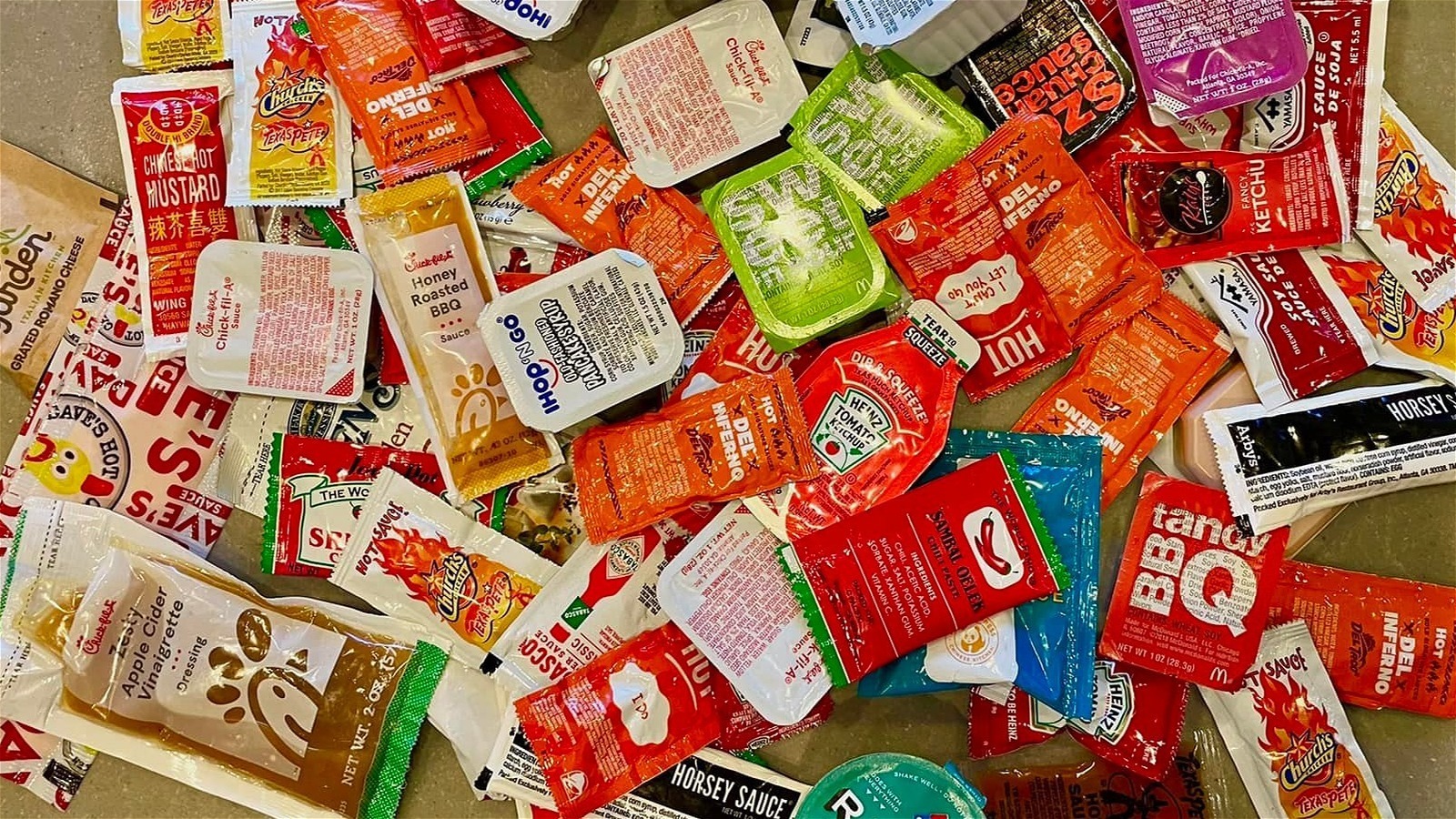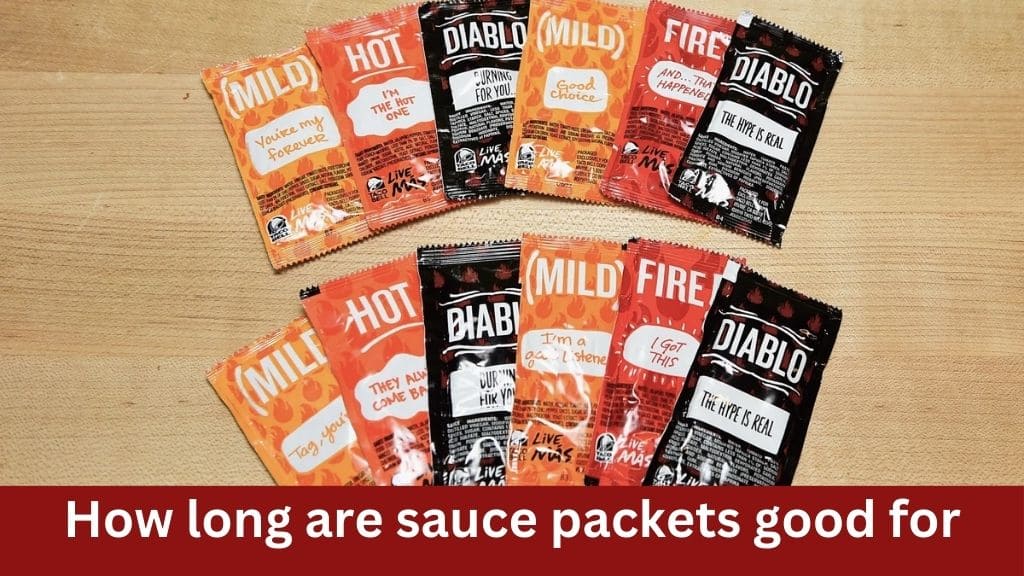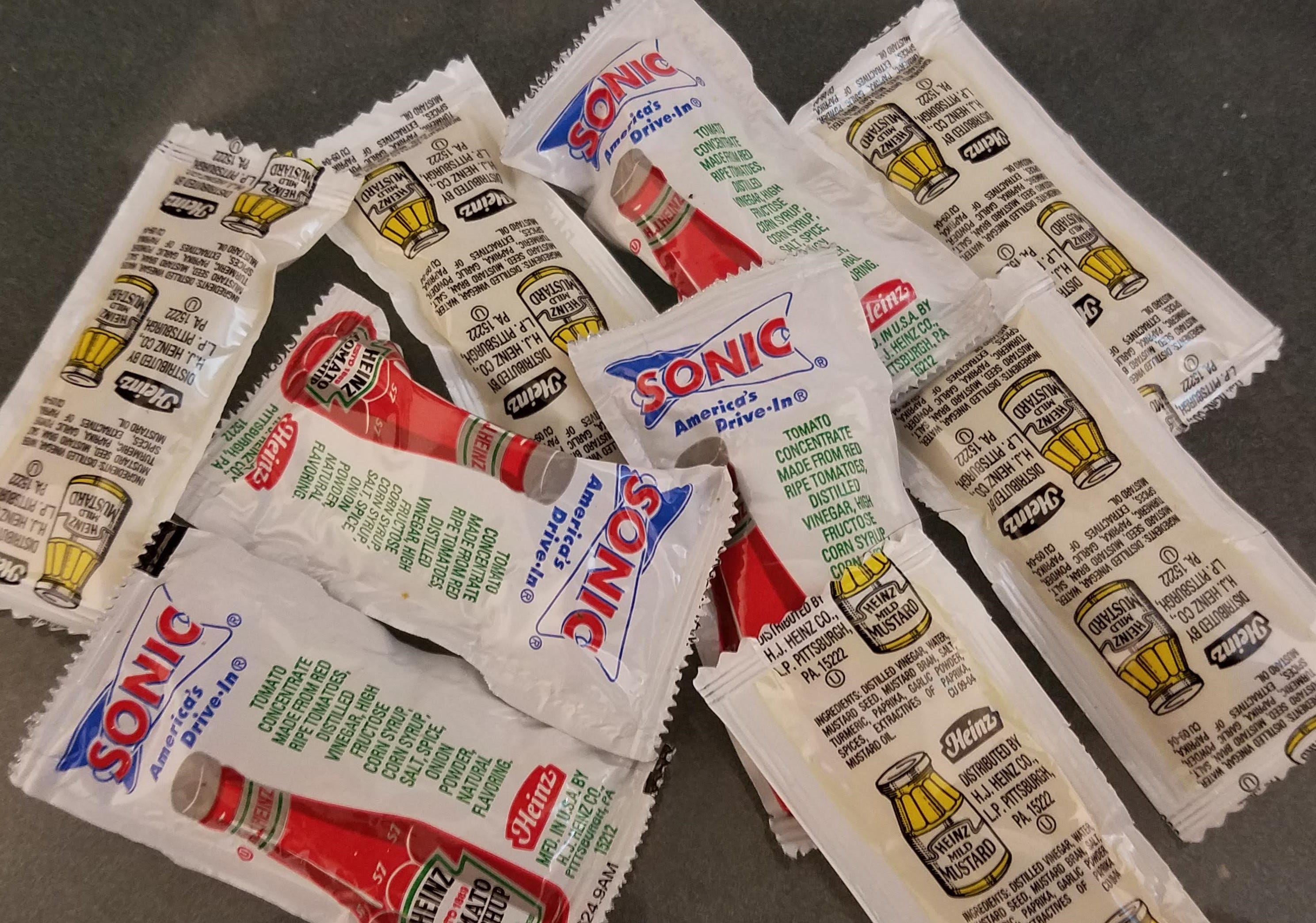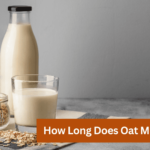Sauce packets, those tiny condiment containers we often collect from fast-food restaurants or takeout joints, are a ubiquitous part of modern dining. From ketchup to mustard, soy sauce to mayonnaise, these single-serve packets offer convenience and flavor on the go. But have you ever wondered how long these sauce packets are actually good for? Do they last indefinitely, or do they eventually expire? In this comprehensive guide, we’ll delve into the shelf life of sauce packets, exploring factors that affect their longevity and offering tips on how to ensure their freshness.
Before diving into the specifics of individual sauce packets, it’s important to understand the factors that influence their shelf life. While some sauces may seem impervious to spoilage, others are more prone to degradation over time. Here are a few key considerations:
Ingredients Composition
The ingredients in a sauce packet play a crucial role in determining its shelf life. Sauces containing perishable ingredients such as eggs, dairy, or fats (e.g., mayonnaise-based dressings) are more likely to spoil quickly compared to those made primarily of sugar, vinegar, and salt (e.g., ketchup, mustard). The presence of preservatives can also extend the shelf life of certain sauces.
Packaging Material
- Foil or Plastic: These materials provide excellent barrier properties, sealing the sauce packets effectively and preventing moisture and air from permeating through. Foil or plastic packets offer superior protection against environmental exposure, helping to maintain the freshness of the sauce for a longer period. They are commonly used for sauces with longer shelf lives or those that are more sensitive to spoilage.
- Paper: While paper packets are lightweight and cost-effective, they are less effective at preventing moisture infiltration and environmental exposure. Paper packets may absorb moisture from the surrounding environment, leading to quicker spoilage of the sauce contents. Additionally, paper packets are more prone to damage and tearing, which can compromise the integrity of the packaging and expose the sauce to contaminants.
Storage Conditions
- Temperature: Storing sauce packets at the appropriate temperature is essential for preserving their quality. Ideally, sauce packets should be kept in a cool environment, away from heat sources such as direct sunlight, stoves, or ovens. High temperatures can accelerate the degradation of sauces, leading to changes in flavor, texture, and color. Refrigeration is recommended for sauces containing perishable ingredients or those that have been opened, as colder temperatures help slow down microbial growth and preserve freshness.
- Humidity: Moisture levels in the storage environment can also impact the shelf life of sauce packets. Excessive humidity can promote the growth of mold and bacteria, leading to spoilage of the sauce contents. It’s important to store sauce packets in a dry area to prevent moisture absorption and contamination. Avoid storing sauce packets near sinks, dishwashers, or other sources of moisture to minimize the risk of spoilage.
- Light Exposure: Exposure to light, particularly ultraviolet (UV) radiation, can degrade the quality of sauce packets over time. UV rays can cause oxidation and chemical reactions within the sauce, leading to changes in flavor and nutrient degradation. To protect sauce packets from light exposure, store them in opaque containers or drawers away from windows and other sources of light. Alternatively, consider using foil or opaque plastic packets that provide additional protection against light penetration.
- Air Exposure: Proper sealing and packaging are essential for preventing air exposure, which can lead to oxidation and spoilage of sauce packets. Ensure that sauce packets are tightly sealed to prevent air from entering and causing degradation of the contents. Avoid leaving packets open or partially sealed, as this can hasten spoilage and compromise the quality of the sauce.
Signs of Spoilage

While sauce packets may not come with explicit expiration dates, there are several indicators of spoilage to watch out for. Here are some common signs that a sauce packet has gone bad:
- Puffiness: A swollen or inflated appearance of the packet can be a sign of bacterial growth or gas production within the sauce. This puffiness indicates that the contents may have undergone fermentation or other microbial processes, rendering the sauce unsafe for consumption.
- Damage: Tears, punctures, or other forms of damage to the packet can compromise its integrity and allow contaminants to enter. Damaged packets are more susceptible to spoilage and may exhibit other signs of degradation, such as off odors or discoloration.
- Discoloration: Any changes in color, such as darkening, fading, or the presence of unusual pigmentation, may indicate chemical reactions or microbial growth within the sauce. Discolored sauces should be discarded, as they may pose health risks due to spoilage or contamination.
- Off Odors: Foul or rancid odors emanating from the packet are clear indicators of spoilage. These off odors may result from the presence of spoilage microorganisms, decomposition of ingredients, or chemical reactions within the sauce. Trust your sense of smell—if the sauce smells unpleasant or different from its usual aroma, it’s best to discard it.
- Odd Texture: Changes in texture, such as clumping, separation, or sliminess, suggest deterioration of the sauce’s consistency and quality. These textural changes may be caused by microbial growth, chemical reactions, or improper storage conditions. Sauce packets with an abnormal texture should be avoided, as they may indicate spoilage or contamination.
Specific Shelf Life Guidelines
While there are no universal rules for the shelf life of sauce packets, manufacturers may provide guidance based on their products’ formulations and packaging. Here are some examples of specific shelf life guidelines for common sauce packets:
Ketchup

- Ingredients: Traditional ketchup is primarily made from tomatoes, vinegar, sugar, salt, and spices. These ingredients contribute to the sauce’s flavor, texture, and shelf stability. The acidity from vinegar helps inhibit microbial growth, while the high sugar content acts as a natural preservative. Additionally, commercial ketchup may contain preservatives such as potassium sorbate or sodium benzoate to further extend shelf life.
- pH Level: The pH level of ketchup plays a crucial role in preventing spoilage. Ketchup typically has a pH level between 3.9 and 4.2, which is acidic enough to inhibit the growth of harmful bacteria. The acidic environment helps preserve the sauce and prolong its shelf life, making it less susceptible to spoilage compared to other condiments with higher pH levels.
- Packaging: The packaging material and design can impact the shelf life of ketchup packets. Foil or plastic packets provide better protection against moisture, air, and light, which can degrade the quality of the sauce over time. Properly sealed packets help maintain the freshness of the ketchup and prevent contamination.
- Storage Conditions: Storing ketchup packets in a cool, dry place away from direct sunlight and heat sources is crucial for preserving their quality. Exposure to high temperatures can accelerate the degradation of ketchup, leading to changes in flavor, texture, and color. Refrigeration is not necessary for unopened ketchup packets but can prolong freshness once opened.
- Shelf Life: While specific shelf life may vary depending on the brand and packaging, unopened ketchup packets typically have a shelf life of around 6 to 9 months when stored properly. However, it’s essential to check for signs of spoilage, such as puffiness, damage, discoloration, off odors, or odd texture, before consuming the sauce.
Mustard

- Ingredients: Mustard typically contains ground mustard seeds, vinegar, water, salt, and sometimes other flavorings or spices. The acidic nature of vinegar helps preserve mustard by creating an environment that inhibits the growth of bacteria and molds. Additionally, mustard seeds contain natural antimicrobial properties, further contributing to its shelf stability.
- pH Level: Like ketchup, mustard is acidic, with a pH level ranging from 3.5 to 4.0. This acidity is crucial for preventing spoilage and extending the shelf life of mustard packets. The low pH inhibits the growth of harmful microorganisms, making mustard less susceptible to spoilage compared to neutral or alkaline condiments.
- Packaging: The packaging material and design play a significant role in maintaining the freshness of mustard packets. Foil or plastic packets provide better protection against moisture, air, and light, which can degrade the quality of the condiment over time. Properly sealed packets help preserve the flavor and texture of mustard, preventing contamination and spoilage.
- Storage Conditions: Storing mustard packets in a cool, dry place away from heat sources and direct sunlight is essential for preserving their quality. Exposure to high temperatures can cause the condiment to lose its flavor, texture, and color over time. While refrigeration is not necessary for unopened mustard packets, storing them in the refrigerator once opened can help maintain freshness and extend shelf life.
- Shelf Life: The shelf life of mustard packets varies depending on factors such as the brand, ingredients, and packaging. Unopened mustard packets typically have a shelf life of up to 1 year when stored properly. However, it’s essential to inspect the packets for signs of spoilage, such as puffiness, damage, discoloration, off odors, or odd texture, before use.
Soy Sauce

- Ingredients: Traditional soy sauce is made from fermented soybeans, wheat, salt, and water. The fermentation process not only enhances the flavor of the sauce but also contributes to its preservation. Soy sauce contains natural preservatives such as lactic acid and alcohol, which inhibit the growth of harmful bacteria and molds. Additionally, the high salt content acts as a further preservative, helping to extend the shelf life of the sauce.
- pH Level: Soy sauce is acidic, with a pH level ranging from 4.4 to 5.4. This acidity helps inhibit the growth of bacteria and other microorganisms, making soy sauce less susceptible to spoilage compared to neutral or alkaline condiments. The low pH level contributes to the preservation of soy sauce and prolongs its shelf life.
- Packaging: The packaging material and design play a crucial role in maintaining the freshness of soy sauce packets. Foil or plastic packets provide better protection against moisture, air, and light, which can degrade the quality of the sauce over time. Properly sealed packets help preserve the flavor and aroma of soy sauce, preventing contamination and spoilage.
- Storage Conditions: Storing soy sauce packets in a cool, dry place away from heat sources and direct sunlight is essential for preserving their quality. Exposure to high temperatures can cause the sauce to lose its flavor, aroma, and color over time. While refrigeration is not necessary for unopened soy sauce packets, storing them in the refrigerator once opened can help maintain freshness and extend shelf life.
- Shelf Life: The shelf life of soy sauce packets varies depending on factors such as the brand, ingredients, and packaging. Unopened soy sauce packets typically have a shelf life of several months to a year when stored properly. However, it’s essential to inspect the packets for signs of spoilage, such as puffiness, damage, discoloration, off odors, or odd texture, before use.
Mayonnaise-Based Dressings

- Ingredients: Mayonnaise-based dressings typically contain mayonnaise (made from oil, egg yolks, and vinegar or lemon juice) as a base, along with additional ingredients such as herbs, spices, and flavorings. The combination of dairy (from the eggs) and oil in mayonnaise makes it more susceptible to spoilage compared to vinegar-based condiments. Additionally, ingredients like fresh herbs or garlic can introduce additional moisture and organic matter, further increasing the risk of spoilage.
- pH Level: Unlike vinegar-based condiments like ketchup or mustard, mayonnaise-based dressings tend to have a higher pH level, typically around 4.0 to 4.5. While this acidity can help inhibit the growth of some bacteria, it may not be sufficient to prevent spoilage entirely, especially in the presence of dairy and other perishable ingredients.
- Packaging: Similar to other condiments, the packaging material and design of mayonnaise-based dressing packets play a crucial role in maintaining their freshness. Foil or plastic packets provide better protection against moisture, air, and light, which can degrade the quality of the dressing over time. Properly sealed packets help preserve the flavor and texture of the dressing, preventing contamination and spoilage.
- Storage Conditions: Storing mayonnaise-based dressing packets in a cool, dry place away from heat sources and direct sunlight is essential for preserving their quality. Exposure to high temperatures can cause the dressing to separate, become oily, or develop off flavors. Refrigeration is recommended for opened packets of mayonnaise-based dressings to slow down the growth of bacteria and prolong freshness.
- Shelf Life: The shelf life of mayonnaise-based dressing packets varies depending on factors such as the brand, ingredients, and packaging. Unopened packets typically have a shelf life of a few months to a year when stored properly. However, once opened, mayonnaise-based dressings should be refrigerated and consumed within a few days to ensure safety and quality.
Tips for Extending Shelf Life

While sauce packets are convenient for on-the-go dining, there are steps you can take to prolong their shelf life and ensure their freshness:
- Inspect Packets Regularly: Periodically check your collection of sauce packets for signs of spoilage. Look for any damage, discoloration, puffiness, off odors, or odd texture that may indicate spoilage or contamination. Discard any packets that show these signs to prevent the risk of foodborne illness.
- Store Properly: Proper storage is key to preserving the freshness of sauce packets. Keep them in a cool, dry place away from heat sources, direct sunlight, and moisture. Consider storing them in an airtight container or drawer to protect them from environmental exposure and contaminants. By maintaining the proper storage conditions, you can prolong the shelf life of your sauce packets and ensure their quality.
- Rotate Stock: Use the “first in, first out” principle to rotate your sauce packet inventory. This means using older packets before newer ones to prevent them from expiring or spoiling. Check the expiration dates (if available) or the purchase dates of your sauce packets and prioritize using those that have been in your collection the longest. By rotating your stock regularly, you can minimize waste and ensure that your sauce packets remain fresh and usable.
- Refrigerate When Necessary: For sauces containing perishable ingredients or those that have been opened, refrigeration can help extend their shelf life. Store opened sauce packets in the refrigerator to slow down the growth of bacteria and prevent spoilage. Make sure to seal them tightly to prevent odors from other foods in the refrigerator from affecting the flavor of the sauce. While not all sauce packets require refrigeration, it’s better to err on the side of caution and refrigerate them if you’re unsure about their freshness.
Conclusion
Sauce packets are convenient, versatile, and add a burst of flavor to countless dishes. While they may not come with explicit expiration dates, understanding their shelf life and signs of spoilage is essential for safe consumption. By considering factors such as ingredients, packaging, and storage conditions, you can maximize the freshness and quality of your sauce packets. Whether you’re stocking up for a picnic, packing lunch for work, or simply satisfying a late-night craving, knowing how long sauce packets are good for ensures that your culinary adventures are always flavorful and safe.






